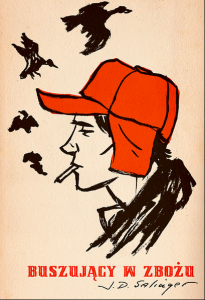Monday: Comin’ through the rye, adapted by Burns, 1782 (1970 Dictionary of World Poetry) — Gin a body meet a body / Comin’ through the rye / Gin a body kiss a body / Need a body cry? / Every lassie has her laddie, — / Ne’er a ane hae I; / Yet a’ the lads they smile at me / When comin’ through the rye
Tuesday: Dithyramb (1995 Dictionary of Poetry) — a hymn sung in honor of the Greek god Dionysos. Later, any wild or rhapsodic poem.
Wednesday: “Architecture is frozen music.” — de Staël / “Greek architecture is the flowering of geometry.” — Emerson (1955 New Dictionary of Thoughts)
Thursday: Tomato (1995 Dictionary of Superstitions) — Historically called the “love apple” because it was thought to have aphrodisiacal properties. Single young women were discouraged from consuming it, lest they become too frisky. When placed in a windowsill, will ward off evil spirits.
Friday: Frisbee (1987 Namesakes) — Named after William Russel Frisbie, a baker who used tins for his pies that made excellent flying saucers, c. 1903.
Poetry and music emerged (unplanned) as themes for this week’s WOOFs. In a previous WOOF post, we talked about what makes a poem good (so the Rigg Poetry Judgement Test). At first blush, it may seem useless to ask what makes a poem good or bad (isn’t it all subjective?) but there are literary standards and conventions that can help gauge a poem’s merit. And poems, like any other documents, are written with specific meanings which can be understood or misunderstood, and their meanings conveyed well and less well. Perhaps it’s helpful to remember that there’s a difference between saying “it’s good” and “I like it.” De gustibus non est disputandum (about tastes, there is nothing that can be argued), after all.
 Let’s face it, misunderstanding poetry is easier than misunderstanding most other written documents. Scholars sometimes even have trouble understanding their own definitions of poetic form. For instance, a dithyramb, as we learned above, is a poem sung in honor of Dionysos. But some will argue that it can’t just be about Dionysos to be a dithyramb, but that it must be addressed to Dionysos to be considered a real dithyramb.
Let’s face it, misunderstanding poetry is easier than misunderstanding most other written documents. Scholars sometimes even have trouble understanding their own definitions of poetic form. For instance, a dithyramb, as we learned above, is a poem sung in honor of Dionysos. But some will argue that it can’t just be about Dionysos to be a dithyramb, but that it must be addressed to Dionysos to be considered a real dithyramb.
And most people know Burns’ “Comin’ Through the Rye” through Holden Caulfield’s famous misinterpretation of the titular poem in J.D. Salinger’s Catcher in the Rye. Holden believes the song to be about saving kids from growing up, when it’s really about adults (well, lassies and lads) having trysts in the rye. But the fact remains, that Holden Caulfield, for all his juvenile misunderstanding, reads the poem and it still informs him about something in the world — in his case, about growing up.
Do you have a favorite poem, or line from a poem? Do you think your interpretation is what the author meant? Do you think it matters?
And just to tie everything together, here’s Pablo Neruda’s Oda al Tomate (Ode to the Tomato). Have a great weekend!



